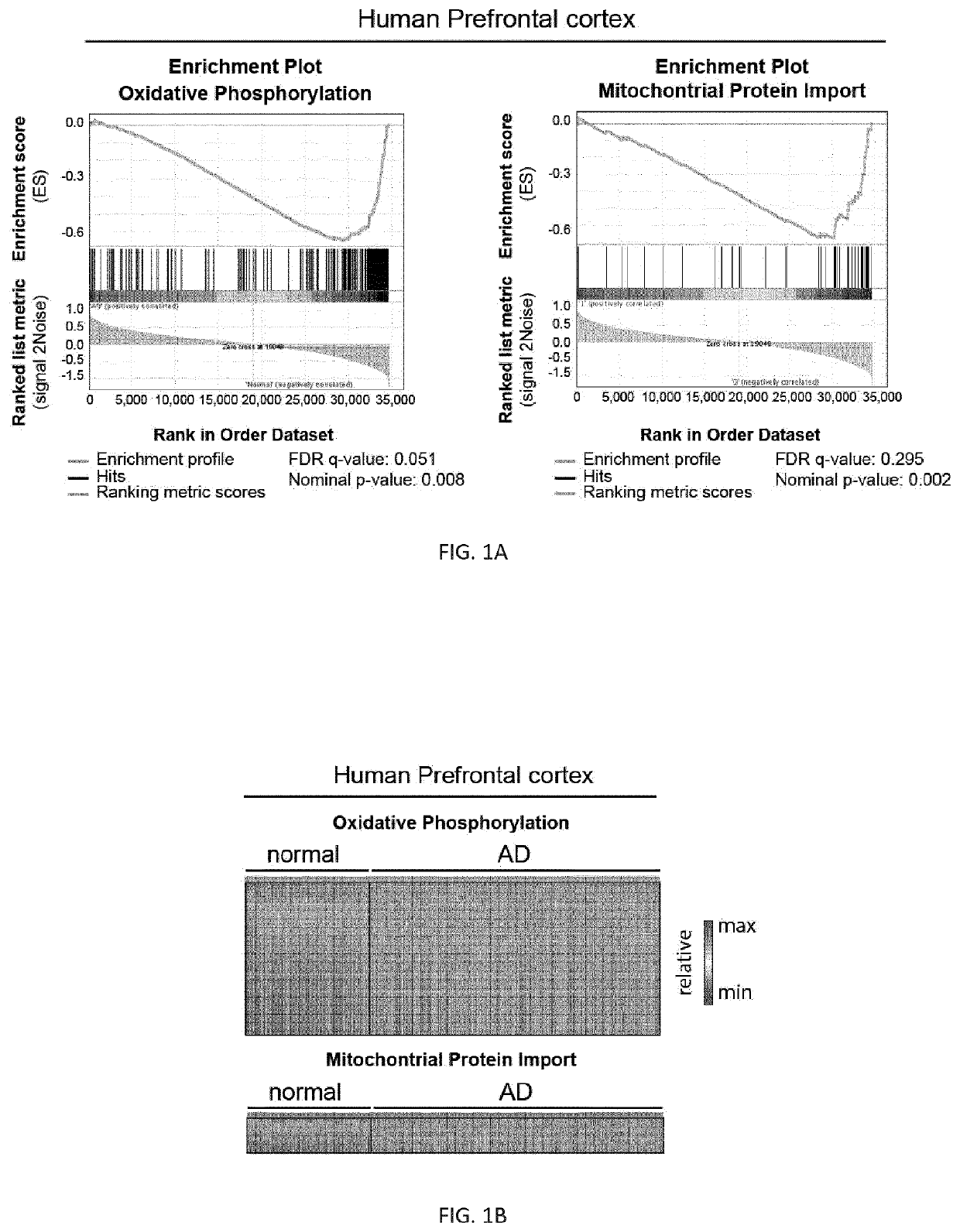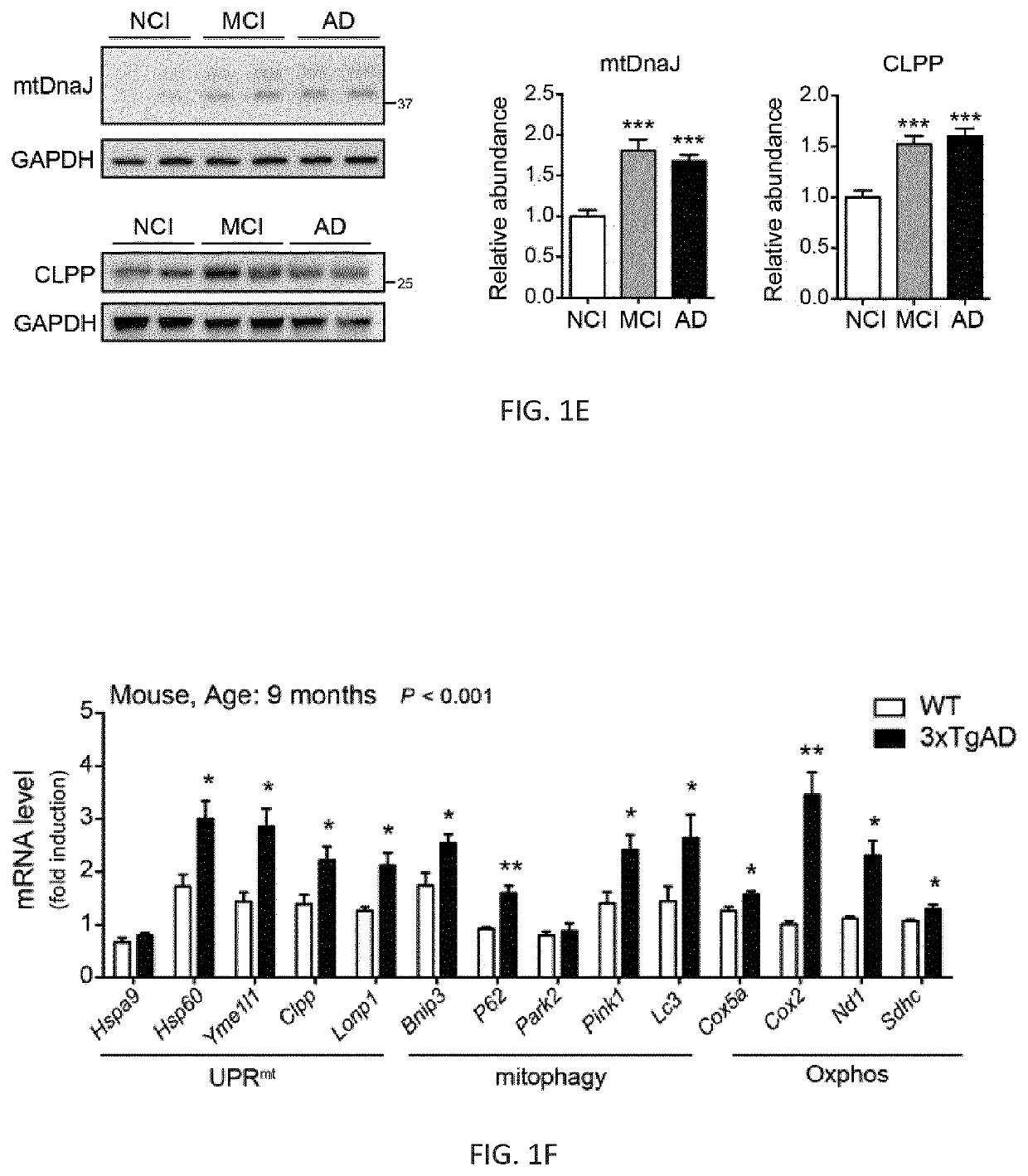Methods of treating amyloid-beta peptide diseases
- Summary
- Abstract
- Description
- Claims
- Application Information
AI Technical Summary
Benefits of technology
Problems solved by technology
Method used
Image
Examples
example 1
REFERENCES FOR EXAMPLE 1
[0160]1 Alzheimer's, A. 2016 Alzheimer's disease facts and figures. Alzheimer's & dementia: the journal of the Alzheimer's Association 12, 459-509, (2016).[0161]2 Mukherjee, A., Morales-Scheihing, D., Butler, P. C. & Soto, C. Type 2 diabetes as a protein misfolding disease. Trends in molecular medicine 21, 439-449, (2015).[0162]3 Dember, L. M. Amyloidosis-associated kidney disease. Journal of the American Society of Nephrology: JASN 17, 3458-3471, (2006).[0163]4 Askanas, V. & Engel, W. K. Sporadic inclusion-body myositis: conformational multifactorial ageing-related degenerative muscle disease associated with proteasomal and lysosomal inhibition, endoplasmic reticulum stress, and accumulation of amyloid-beta42 oligomers and phosphorylated tau. Presse medicale 40, e219-235, (2011).[0164]5 Ahmed, M. et al. Targeting protein homeostasis in sporadic inclusion body myositis. Science translational medicine 8, 331ra341, (2016).[0165]6 Gauthier, S. et al. Why has the...
example 2
[0223]Inhibition of the ceramide and sphingolipid biosynthesis pathway improves fitness in the GMC101 worms.
[0224]C. elegans strains were cultured at 20° C. on nematode growth media (NGM) agar plates seeded with E. coli strain HT115. The GMC101 strain [unc-54p::A-beta-1-42::unc-54 3′-1054 UTR+mtl-2p::GFP] (McColl et al., 2012) was provided by the Caenorhabditis Genetics Center (University of Minnesota). GMC101 worms constantly express the human Aβ isoform 1-42 in muscle cells, but adults only develop age-progressive paralysis and amyloid deposition in the body wall muscle after a temperature shift from 20 to 25° C. Given the muscle-targeted overexpression of the Aβ peptide in GMC101, this strain can be considered as a general model of Aβ disease, and equally suitable to mimic the proteotoxic phenotypes observed in Alzheimer's disease (AD) and inclusion body myositis (IBM).
[0225]In this assay, GMC101 worms were treated with Myriocin ((E,2S,3R,4R)-2-amino-3,4-dihydroxy-2-(hydroxymethy...
example 3
[0229]Inhibition of the ceramide and sphingolipid biosynthesis pathway increases proteostasis in the GMC101 worms.
[0230]C. elegans movement analysis was performed as described (Mouchiroud et al., 2016), using the Movement Tracker software. ˜50 adult worms were used per condition for movement assays. Treatment with 10 uM Myriocin increased the mobility of the GMC101 worms within a period of 4 days (FIG. 13B).
[0231]To score for paralysis and death, 50 worms per condition were manually scored after poking as described (McCool et al., 2012; Florez-McClure et al., 2007). Worms that were unable to respond to repeated stimulation were scored as dead. Treatment with 10 uM Myriocin decreased both paralysis and death of the GMC101 worms after a period of 4 days (FIG. 13C).
PUM
| Property | Measurement | Unit |
|---|---|---|
| Time | aaaaa | aaaaa |
| Dimensionless property | aaaaa | aaaaa |
| Frequency | aaaaa | aaaaa |
Abstract
Description
Claims
Application Information
 Login to View More
Login to View More - R&D Engineer
- R&D Manager
- IP Professional
- Industry Leading Data Capabilities
- Powerful AI technology
- Patent DNA Extraction
Browse by: Latest US Patents, China's latest patents, Technical Efficacy Thesaurus, Application Domain, Technology Topic, Popular Technical Reports.
© 2024 PatSnap. All rights reserved.Legal|Privacy policy|Modern Slavery Act Transparency Statement|Sitemap|About US| Contact US: help@patsnap.com










